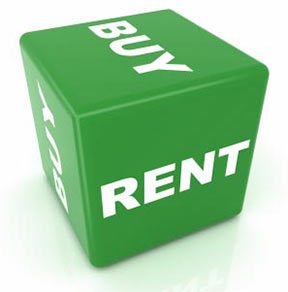 Since I wrote the “Own vs Rent: Why Hosting Your Blog or Web Site on Someone Else’s Platform is a Bad Idea” it bugged me that I must talk about the positive side to having someone else take care of your web site needs. I’ve recently joined Medium in addition to being a member on a few other sites and I love the collaborative features on Medium. These days when everyone is creating their very own and unique yet-another-instagram or yet-another-youtube or yet-another-facebook it was nice to see something refreshing and useful.
Since I wrote the “Own vs Rent: Why Hosting Your Blog or Web Site on Someone Else’s Platform is a Bad Idea” it bugged me that I must talk about the positive side to having someone else take care of your web site needs. I’ve recently joined Medium in addition to being a member on a few other sites and I love the collaborative features on Medium. These days when everyone is creating their very own and unique yet-another-instagram or yet-another-youtube or yet-another-facebook it was nice to see something refreshing and useful.
So why, even considering all the points from previous post, it may still make sense to have your web site on someone else’s ground?
1. A Large Community. If your product is, ultimately, a text (reviews, blog posts, rants, whatever) – you are writing for other people to read and respond. Having a community around helps a great deal – people are more likely to respond when they are a part of the same network. That’s how Tumblr, Medium operate and that’s why Livejournal is still twitching although it should have died painful and miserable death years before MySpace. Having a community is probably the heaviest argument towards having your blog on a network vs. hosting on your own. You can (and probably should) crosspost back to your own blog for the reasons stated in previous post (network may shut down or make your posts invisible), but ultimately the easier people can interact with you and your blog the better. Same can be said about the likes of Etsy or eBay – it’s a marketplace where people come to buy things, so you may just as well participate. The more channels you sell through the better.
2. Performance Considerations. If you are on your own and haven’t made it big time yet – chances are your site hosting resources aren’t anywhere near the capacities of big players. Sudden spike in visits or (let’s think positive) a steady surge may send your web site into a crawl or make it unavailable. Big networks almost always can handle high loads better. Additionally, there are services that are tailored for supporting specific platforms (like WP-Engine for WordPress blogs). Their costs are usually slightly higher than ordinary hosting’s but they will take care of the shining the bells and cleaning the whistles of your platform.
3. A Piece Of Mind. Knowing that a dedicated team of developers whose (hopefully) full time jobs are keeping your site up and running makes it easier to concentrate on other matters of your business. Of course, you can always get a case of LiveJournal, that has been steadily progressing from bad to worse to completely unreliable, but it’s rather an exception. Picking a right resource may just be good enough to do the job you want it to do. Compared to finding a developer or a team that is capable of steady performance given the intermittent task structure you inevitably will have is a deed of it’s own.
4. Price Considerations. If the hardest technical challenge you ever overcame was changing background on your iPhone to your selfie, taking care of technical matters may end up being too costly – with finding and paying the right person to support your site and all. Paying for service that does just the right amount of work for you may turn out to be less expensive while providing enough features for your needs. On top of that hosting and maintenance of well known popular platforms is almost a commodity now, so large companies can give a better price compared to small time shops.
5. Features That Otherwise Would Be Hard To Get. If you don’t know what “PCI compliance” really is – you have never really done e-commerce. Additionally, certain providers may allow you to accept payments in different currencies, add marketing features or sell goods that otherwise would be impossible or too complicated to set up on your own. Some (like Amazon) will even warehouse your inventory to shorten the trip to the consumer. Such features are hard to beat especially when they come as a part of a package.
6. Security Considerations. In these days where even big names like Target and Home Depot become victims of hacker attacks it’s easy to imagine that breaking into a small time shop on a small time server wouldn’t be a big deal for a determined hacker. By sticking with a larger provider you reducing the risk of being brought offline and in case it happens – reducing the downtime itself. Large companies have the capacity, knowledge and resources to employ security solutions that are way over the head any small or medium businesses. There is, of course, no silver bullet, but decreasing chances of downtime is worth paying extra if it comes to that.
7. Scalability. You are building your business to grow. So what if your site starts getting ten times more visitors, or even hundred times more. The platform you used before may not be enough – either your server is too weak or the platform you chose isn’t optimized. This could be a pretty scary race against time when you scramble to find people and make decisions on how to upgrade or where to move without full understanding of what you really need. Having a (supposedly) highly qualified team that could answer these questions in an instant – just because they’ve been down that road before multiple times – is invaluable, especially when your web site is crawling under heavy load of new clients.
It’s rather obvious that no single tool is good for all jobs. Picking whether to get your own piece of internet real estate or get into a community with shared parking lot and garbage collection is an important decision that directly affects the future of the business.
 The Good
The Good This is a diverse category because you can drop pretty much every single major issue with your web site – from non-working contact form to eye-scratching design from 1980s to web sites that never finish to load because your friend’s son who put it together didn’t realize that cute kitten picture on a front page is 15MB BMP file. But rather than talk about these, easily addressable issues, I’d point to a really major one – not having any kind of web site. Imagine – there are businesses out there who decidedly go without web site at all. There are usually two main justifications – “we don’t need one” and “we don’t have money for it”. It’s almost like wishing for a win in a lotto without buying a single ticket. Aside from the fact that people prefer to shop from the convenience of their homes (less clients for you), there are more choices online that you will ever have in your inventory (again – less clients for you), you are also limiting yourself by not pitching to those who actually are interested in what you want to sell to them. With the average rent on any decent store around tens of thousands of dollars per month a
This is a diverse category because you can drop pretty much every single major issue with your web site – from non-working contact form to eye-scratching design from 1980s to web sites that never finish to load because your friend’s son who put it together didn’t realize that cute kitten picture on a front page is 15MB BMP file. But rather than talk about these, easily addressable issues, I’d point to a really major one – not having any kind of web site. Imagine – there are businesses out there who decidedly go without web site at all. There are usually two main justifications – “we don’t need one” and “we don’t have money for it”. It’s almost like wishing for a win in a lotto without buying a single ticket. Aside from the fact that people prefer to shop from the convenience of their homes (less clients for you), there are more choices online that you will ever have in your inventory (again – less clients for you), you are also limiting yourself by not pitching to those who actually are interested in what you want to sell to them. With the average rent on any decent store around tens of thousands of dollars per month a  One of the worst things you can do to your web site is keep relaunching it every few months on a new domain names. It’s not a secret anymore that your domain name equals your brand – twice true for small businesses. Of course, you can launch a new web site on a new domain name if you used to be GreatWidgetsOnline.com and you have just bought GreatWidgets.com – it’s not a major major change, but rather a welcome convenience. However, if you keep relaunching the site from GreatWidgetsWeSellHere.com to ThingamabobsOnlineRightHere.com to WhatchamacallitSalesForYou.com – it’s not really clear how you are going to attract the customers and keep them around. Even if there were some issues associated with your domain before – it’s easier to fix them than rebuild the whole thing from the scratch. Besides, even if there was some bad press – you can always use it to your advantage.
One of the worst things you can do to your web site is keep relaunching it every few months on a new domain names. It’s not a secret anymore that your domain name equals your brand – twice true for small businesses. Of course, you can launch a new web site on a new domain name if you used to be GreatWidgetsOnline.com and you have just bought GreatWidgets.com – it’s not a major major change, but rather a welcome convenience. However, if you keep relaunching the site from GreatWidgetsWeSellHere.com to ThingamabobsOnlineRightHere.com to WhatchamacallitSalesForYou.com – it’s not really clear how you are going to attract the customers and keep them around. Even if there were some issues associated with your domain before – it’s easier to fix them than rebuild the whole thing from the scratch. Besides, even if there was some bad press – you can always use it to your advantage.